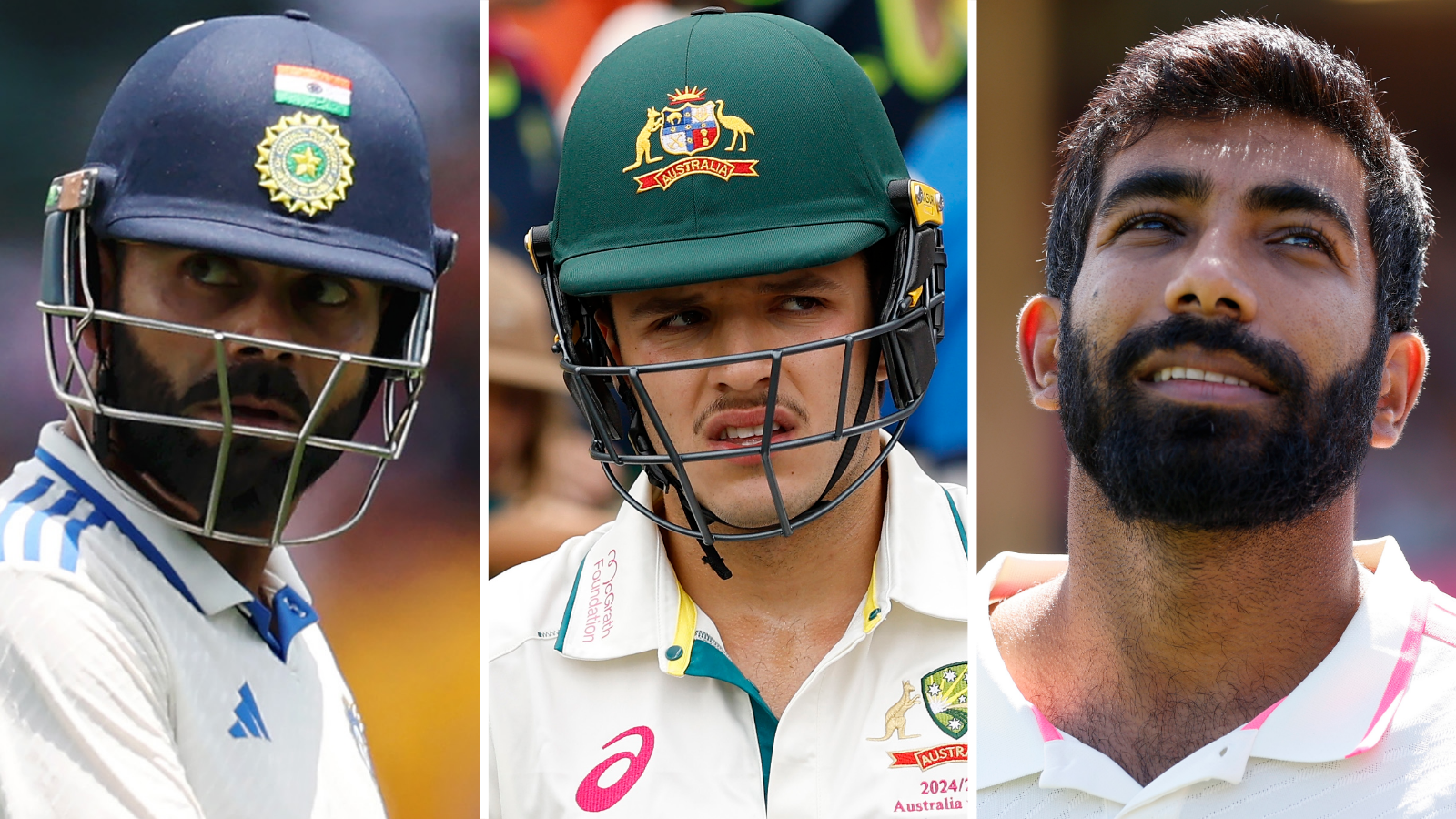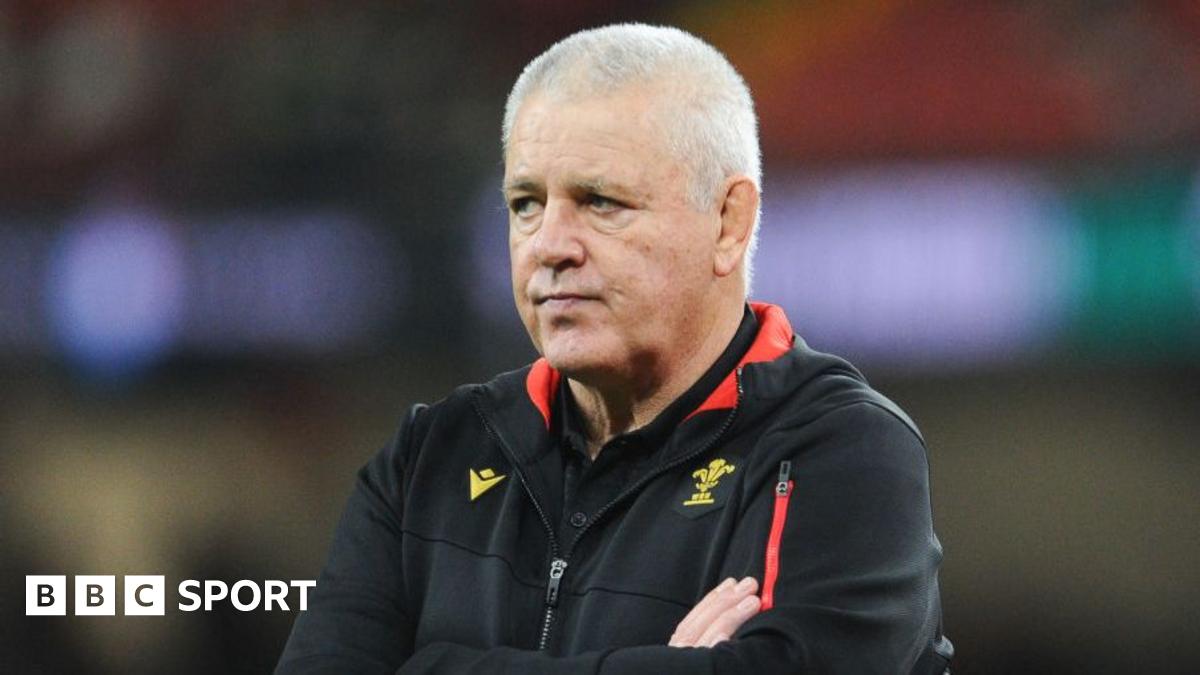ARTICLE AD BOX
 Image source, Getty Images
Image source, Getty Images
Virat Kohli (left), Sam Konstas (centre) and Jasprit Bumrah (right) had contrasting series
Callum Matthews
BBC Sport journalist
Australia's series win against India "lived up to the hype" according to captain Pat Cummins.
It was a series that swung one way and then the other with some star players performing and others struggling.
The pair represent England's next two Test series opponents (aside from a one-off game against Zimbabwe in May), so what can Brendon McCullum and Ben Stokes learn from the Border-Gavaskar duel down under?
BBC Sport and data analysts CricViz have looked at some of the key trends.
Will we see Rohit Sharma again, and why is he struggling?
How often do you see a captain drop himself? Rohit Sharma missed the first Test due to the birth of his second child, but poor returns in the next three games meant he "opted to rest" in the must-win series finale in Sydney.
The 37-year-old scored 31 runs in five innings - an average of 6.20 - with a high score of 10.
It follows a general decline for the right-hander, with his 23.1 average since December 2023 the second lowest among batters to score 400-plus runs in that time (behind only New Zealand's Tom Blundell).
His struggles are stark against pace, where he is averaging just 17.1 compared to a career average of 37.5. He's being dismissed every 28.4 balls by a seamer, compared to 69 across his career.
That could be attributed to a new weakness off the back foot. It was a great strength, with his average of 58.4 off the back foot until November 2023 among the top 25% of players.
Since the start of December 2023 though, that average has dropped to 16.4 - the lowest of all players.
Speaking after the defeat in Sydney, India head coach Gautam Gambhir said: "I can't talk about the future of any player, it's up to them as well.
"But what I can say is that they still have the hunger, they still have the passion, they're tough people. And hopefully they can continue to take Indian cricket forward."
Kohli's decline continues
'It's a gimme' - Kohli angry after falling to Boland
Another India batter that struggled was Virat Kohli. He scored 190 runs at an average of 23.75, but that is helped by one century. He had five single-figure scores in eight other innings.
Similarly to Rohit, it is a trend in Kohli's career. From his debut to 2019 he averaged 54.97, but that has dropped to 30.72 since 2020. It drops even further to 22.47 in his past 10 Tests.
Since the start of 2024, his average of 23.2 is the ninth lowest among players with a minimum of 10 innings.
He is still capable of great innings and moments - and he's still as fired-up as ever in the field - but there are ways to target him.
Australia seamer Scott Boland revealed their plans, external included switching lines to fifth stump once Kohli was settled at the crease and it brought dividends with all of Kohli's dismissals caught behind or in the slips.
Kohli averaged 61 on the drive against pace until 2019, but that has dropped to 33.4.
In that first time period, he was dismissed once in every 96 defensive shots, but has dropped to 43 between 2020 and 2023 and 24 in his recent poor run.
His struggles outside off stump are well documented.
Since the start of 2020 Kohli averages just 11.1 to good & back-of-length deliveries in the channel. Since the start of 2024 his average is 3.71, with seven dismissals in 11 innings. For comparison the global average for top-order batters (one to four) is 19.84 between 2011 and 2025.
It is an area England are bound to target if Kohli remains part of the fold this summer.
Youngsters deliver for both sides
How debutant Konstas 'lit up' Boxing Day Test
Two batters that did perform for India were 23-year-old Yashasvi Jaiswal and 21-year-old Nitish Kumar Reddy.
Jaiswal averaged 43.44 on his first tour of Australia, while all-rounder Reddy averaged 37.25.
Australia's top-order struggles in the first three games saw a call-up for 19-year-old Sam Konstas, and he got stuck straight into the battle by ramping Jasprit Bumrah and having an alteration with Kohli in the Boxing Day Test.
More words were exchanged with Bumrah in the fifth game too, leading to former Australia player Mark Waugh telling Fox Cricket that Konstas "would have a target on his back" if he "keeps behaving like he is".
All three seem set to play for India and Australia respectively in the series against England, although Konstas' average of 28.25 means his place is far from assured.
He is strong against full deliveries and balls on the pads, but his defence is weak. His false-shot percentage was 61 when playing the forward defence and 56% on the back foot.
The right-hander also played 10 false shots from 15 balls when the ball was seaming back in. That is area for England to target.
Jaiswal's strong start to Test cricket continued but he has been dismissed six times in 14 innings by left-arm seamers - could England utilise Josh Hull here? His average against the ball that moves away is just 19.7 too.
For Reddy, his average drops to 10.3 against hard-length balls (eight-10m) and when bowlers go wider on the crease he averages 19.7, compared to 89 when they are closer to the stumps.
Cummins, Starc & Boland deliver
India all out for 185 as Australia take control
Two injuries for Josh Hazlewood and a lack of potency from spinner Nathan Lyon (nine wickets at 36.88) and all-rounder Mitchell Marsh (three wickets at 46.33) left Australia's seamers with some heavy lifting to do.
Questions remain about their stocks beneath Cummins, Mitchell Starc and Scott Boland but the veteran trio lifted Australia to the series win.
Cummins claimed 25 wickets at 21.36, Starc 18 at 28.66 and Boland, despite only playing three games, 21 at 13.19.
Starc and Cummins were responsible for 48.8% of Australia's overs in the series - up from 41.7% in home Tests the past two years.
Cummins' speeds dropped slightly in the series (85.1mph average in the first to 83.8 in the last) but Starc's average speed was actually at its highest in Sydney (87.7).
They will face a similar challenge, in terms of turnaround between matches, in next winter's Ashes but, after February's tour of Sri Lanka, their only Test before the Ashes is the World Test Championship final against South Africa in June. They have time for rest.
They weren't often helped by their batters in this series either. Australia have been three down for less than 100 on 13 occasions since the start of 2024.
That is the fifth-worst among the eight Test Championship sides, but their average runs per dismissal for the top three of 27.4 is the third lowest.
Staggeringly, across the 192 innings in the series, there were 100 scores of 10 or fewer. Australia accounted for 47 of them.
Brilliant Bumrah lacks support
Bumrah removes Head & Marsh in same over
We are running out of superlatives to describe the brilliance of Jasprit Bumrah. His 32 wickets came at 13.06.
He consistently averaged 84mph and 58% of his deliveries were on a good length, bringing 15 wickets at 10.73.
He averaged 5.3 with his hard-length balls too, so England will need to target fuller-length deliveries, where his economy rate climbed to 5.66, to score runs.
The problem for India is the support around him.
Mohammed Siraj had a good series, claiming 20 wickets at 31.15, but the pair were responsible for 49% of the balls India delivered and 61% among seamers.
Prasidh Krishna did well in claiming six wickets in the final Test, but Akash Deep averaged 54 and Harshit Rana 50.75.
Mohammed Shami remained unavailable after sustaining swelling round his knee as he looked to increase his workload ahead of a return. He would add another dimension to India's attack.
The spin department is now a question too after Ravichandran Ashwin's retirement.
Ravindra Jadeja and Washington Sundar claimed just four and three wickets respectively in three Tests.
Axar Patel is one option but he's yet to play Test cricket outside of Asia, while Kuldeep Yadav has only played two games outside of Asia.
Jadeja's second-worst bowling average (43.48) is in England so India have questions around the make-up of their attack.

 1 week ago
5
1 week ago
5








 English (US) ·
English (US) ·